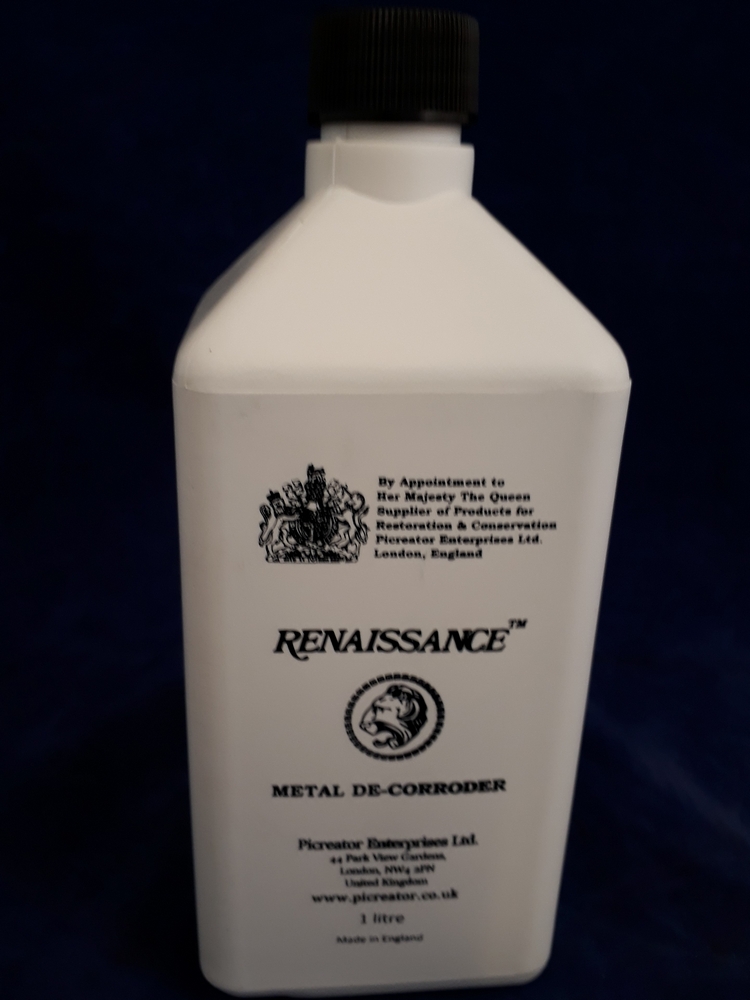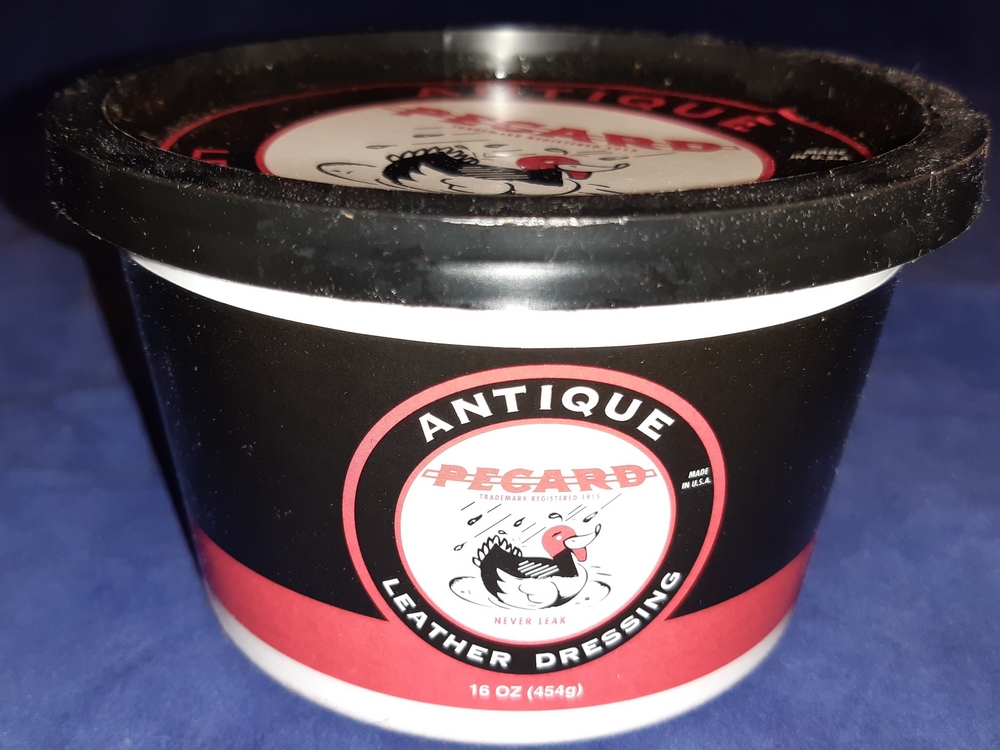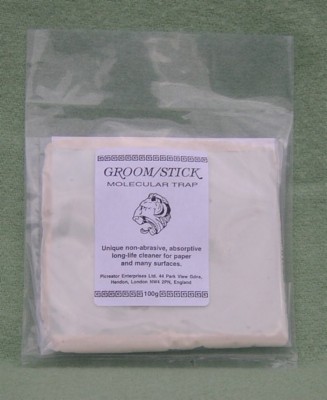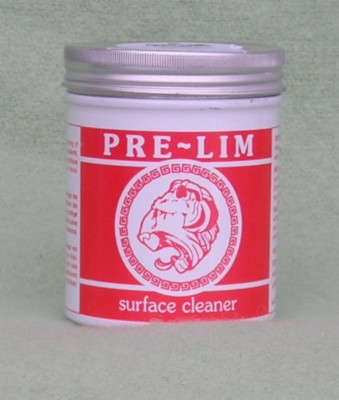- Email: dave.r.cooper@btinternet.com
- Mobile: 07964 858098
- Phone: 01538 702738
0 - £0.00
- 0 items
- view cart
No products in the basket.
Menu
No products in the basket.
No products in the basket.
£15.00
11 in stock
PECARD Leather Dressing – 6 fl oz (US) (0.18 litre) Tub
(also avilable in 16 fl oz (US) (0.48 litre). 32 fl oz (US) (0.96 litre) – please contact us for details and prices)
 We are proud to offer Pecard Antique Leather Dressing for sale – this is an antique leather treatment which, we think, is better than anything else on the market, at any price. We can ship worldwide to all destinations outside of North America.
We are proud to offer Pecard Antique Leather Dressing for sale – this is an antique leather treatment which, we think, is better than anything else on the market, at any price. We can ship worldwide to all destinations outside of North America.
Pecard Leather Dressing is a safe, clean, leather care product which will help with restoration, revitalisation, rejuvenation, waterproofing and also cosmetically enhance the valuable leather items in any collection – whether it be militaria or whips. Pecard will soften and revitalise old leather, giving it a lasting suppleness and a shine that can be gently buffed (on non-flaking surfaces only), it will also greatly slow the further deterioration of articles that have areas which are cracking or flaking.
Pecard Leather Dressing cannot perform miracles – so it won’t restore deterioration that has resulted from lack of care and inappropriate treatment over the years; although, having said that, it can work wonders and revitalise any leather, old or new – why not try it and see for yourself?
Leather Dressing from Pecard is ideal for the care of all fine leather goods. Pecard Leather Dressing, manufactured in Wisconsin, USA, since 1902, is the unrecognized jewel among the many leather dressings on the market. It is based on a petroleum lubricant similar to vaseline, with additions of selected waxes including beeswax.
It is a dressing which penetrates the leather, allows the fibres to bend and move without chafing and breaking, coats the fibres to inhibit oxidation, and helps maintain a desirable level of moisture in the leather. It is chemically neutral, carrying neither salts nor harsh solvents, and does not decompose to form damaging chemicals. With low volatility it is long lasting. It is an economical dressing – there are no volatile carrier agents such as water or kerosene to dilute the lubricant. Pecard Leather Dressing is the dressing used by the knowledgeable collectors of leather items and museum conservators. We offer Pecard Leather Dressing in three convenient tub sizes: 6 fl oz (US) (0.18 litre). 16 fl oz (US) (0.48 litre). 32 fl oz (US) (0.96 litre).
The majority of leather dressings are based on tallow or neatsfoot oil. Tallow, even kidney fat, contains salts which build up with repeated dressing and attack the leather fibres.
Neatsfoot oil compounds, long recognized for damage to sewing, also weaken and blacken the leather. Both these animal fats provide a culture for the growth of bacteria and fungus, and turn rancid, resulting in further attack on the leather. The more liquid formulations also evaporate quickly, leaving the leather dry and open to rapid deterioration by oxidation and mechanical break down.
The appropriate treatment of a leather item depends upon its condition, or the degree of deterioration when treatment is started. Leather deteriorates largely by four means:
Use your fingers (Pecard Leather Dressing is clean to use and nearly odourless), to apply the paste to all surfaces of the leather item. Take care to avoid any non-leather areas. Place the item on a non-absorbent surface, at room temperature, for a few days until Pecard gently softens old fibres. NEVER artificially heat leather or set old leather in the sun. If the paste is completely absorbed, reapply a lighter coat and wait another day. When the paste remains on the surface, wipe it off with a clean, lint free cloth. Buff with a soft shoe brush and watch the leather GLOW with life. If the leather surface is not flaking, buff with a lint free cloth for a higher, sleeker shine.
Antique leather in dry climates will require more frequent re-treatment with Leather Dressing – approximately every 4 to 6 months. For less dry climates, a 6 to 8 month schedule is adequate. In either case, a lighter application may be made and the period for absorption will be shorter.
A whitening of the surface of some treated leather can occur if the temperature drops low enough to harden the heavier oil in the leather treatment. Do not worry, this is totally harmless – the residue can be wiped off with a soft, absorbent rag, or gently buffed off with a soft shoe brush.
For dirty, but smooth-surfaced antique leather, use saddle soap applied with a shaving brush for a soft foaming action, then gently wipe with a clean, moist sponge. After a short drying period, apply the Leather Dressing to your clean leather article. Despite the gentle nature of this procedure, flaking leather will continue to flake during this cleaning process.
Pecard is colourless and adds no colour to leather. However, tanning, heat, dry air, wetting and drying, sunlight (ultraviolet rays), constant humidity, bacteria, stress and salts from the body, can cause a piece of leather treated with Pecard to slightly change colour. Pecard restores life to leather and gives it a healthy glow, halting fibre breakdown due to dryness.
Pecard can prevent further damage to already damaged leather products and keep new leather products beautiful. New leather contains certain oils for suppleness. The fibre bundles are long and strong, as oils dry out, these bundles stiffen and break. The fibre bundles require neutral moisture and lubrication – both of which are safely provided by Pecard Leather Dressing. The density of Pecard ensures that, once leather absorbs its needs, further treatment will not be required for some time.
This procedure describes the restoration of an American saddle, but the same process can be applied to any leather saddle. Since it’s usually necessary to dismantle a saddle before restoration, follow these guidelines:
If you want to save the strings, first wet, or lubricate, them – this makes the strings easier to undo and allows easier removal of the jockeys and skirts. A quicker method is to cut them beneath the rosettes and replace the strings.
The dismantling of a saddle to clean, lubricate and restore is a simple process. Sometimes it is difficult to remove the cantle and pommel covers, but often it is not necessary. Don’t use too much force when removing brads, nails, or screws which hold the leather to the tree. Rough handling can result in rips or tears. After the jockeys are off, remove the skirts, stirrup leathers and attached fenders.
An important part of restoring is cleaning. Use warm water and soap (we recommend a pH balanced cleaner such as Lexol’s pH Cleaner in the orange bottle). Use a soft nylon bristled brush to soften the leather, loosen grime, grease, grit; it will also rinse traces of sweat, urine and manure. Always keep the leather wet; this prevents sloughing off the top grain of old, dry leather. Rinse the leather several times.
Once the leather is clean, dry it until it’s slightly moist. Then press, straighten, form and condition. Use Antique Leather Dressing for all the surface and flat items – coat leather at least three times. Leave each coat to stand a few days, allowing nature to take its course. Rub off any excess.
While the saddle is dismantled, wash the tree and give the rawhide covering a light coat of Leather dressing. If the sheep lining is fine, don’t remove it. Otherwise, remove it and apply a light coat of Dressing to the flesh side.
In dry climates saddles should be conditioned approximately every four to six months. For more humid climates, a six to eight month schedule is adequate.
Items made from Snakeskin are not so common in the UK, however we include this description for reference, just in case you have an old pair of Snakeskin Boots!
Reptile skins have special care and preservation needs. Pecard Leather Dressing gives long life and beauty to these costly materials.
Because boots are used on the ground where it is hotter, dirtier and drier, regularly wipe, or wash, boots then pat dry. Apply a conditioner and allow it to penetrate before wiping away the excess.Although reptile skins are generally non-porous and resist most conditioners, Pecard uniquely clings and penetrates reptile skin. Pecard combines its excellent lubrication and consistency to work between the layers of snakeskin. Pecard adheres to the surface, providing long-term moisturisation, lubrication and waterproofing, as well as greatly enhancing the colour and feel of snakeskin boots.
 |
These are some of the questions that we are asked most often!
What is Pecard made from and why is it so effective in reviving antique leather? Pecard is made from a food grade petroleum base, combined with a blend of natural waxes including bees wax. This formula of natural ingredients softens and feeds the leather; prevents further hardening and cracking; resists most acids, and repels water – whilst still allowing the leather to breathe. How do I apply Pecard leather dressing? Apply with a lint free cloth or, for best results, use fingers to work well into the leather. Take care to keep away from non-leather parts of the item. When Pecard is well worked in, leave on a non-absorbent surface until fully absorbed – often 2-3 days. Allow to dry at room temperature, out of direct sunlight. Re-apply second coat and wait another day. Repeat until item will not absorb any more. Brush with lint free cloth, or clean shoe brush if a shiny finish desired. How often should I re-apply Pecard Antique Leather Dressing? Depends on the item, usage and storage conditions. In dry climates, every 4-6 months is fine. In humid conditions, say 6-8 months. If the item is frequently used, treat a little more often – if it seems to be drying out it’s time for a feed! Can I speed up the drying process if I place my A2 Jacket near a heat source after treatment? No! For Pecard to work properly, always allow your jacket to dry naturally, out of direct sunlight, at room temperature. I have noticed after treatment a white film sometimes appears on my vintage saddle – particularly when it is cold. Why is this, and how can I remove it? Low temperatures cause this reaction. The natural oils in the dressing harden, resulting in the white/opaque film. This can simply be rubbed off with an absorbent cloth or shoe brush and it will not effect or damage the saddle in any way. Why is Pecard different from other commercial leather dressings available on the market? Pecard Antique Leather Dressing has been in production since 1902 – so the guys in Wisconsin have had time to perfect their product! While the actual formula is a closely guarded secret, it is based on a vegetable grade lubricant similar to Vaseline with the addition of various natural waxes including bees wax. Pecard works by penetrating the leather and allows the fibres to bend and flex without chaffing and breaking. It also coats the fibres to inhibit further oxidation and maintains the moisture level within the leather. Sounds too good to be true? Try it and prove the performance for yourself! Can Pecard only be used on vintage leathers? Pecard Leather Dressing is designed specifically for antique leathers but is equally effective when used on modern leather. An application every 6 months will maintain the lubrication put in by the tannery and will keep the leather flexible. How long should I leave Pecard on before polishing? Allow Pecard time to do its magic! It is chemically neutral and contains no solvents and does not decompose to form damaging chemicals. In order to obtain the maximum benefit from the treatment, allow several days, or perhaps a week, for full penetration of the leather to be achieved. The strap on my great grandad’s rifle, which he used in WWI, is brittle, cracked and starting to fall apart. Will Pecard Leather Dressing restore it to its original condition? No! Pecard is a great product – but it cannot work miracles – you need Harry Potter for that! One of the main enemies of antique leather is oxidation and chemical damage. Their combined effects will eventually turn the leather to dust. Pecard will inhibit further oxidation and correct the moisture levels in the strap, so preventing further deterioration, but it cannot reverse the existing damage. What size tubs of Pecard Leather Dressing do you supply? We try and have in stock 3 tub sizes. The smallest PLD-6 is 6 fl oz (US) (0.18 litre), the standard size PLD-16 is 16 fl oz (US) (0.48 litre), and the choice of the professional is PLD-32 at 32 fl oz (US) (0.96 litre). Pecard goes a surprisingly long way, so given its performance it represents great value for money – but don’t just take our word for it, try a tub and prove it for yourself! Does Pecard Antique Dressing have a shelf life, as I can’t see a “use by date” printed on my tub? No! Pecard is basically inert. All we ask is you keep the lid firmly on the tub when not in use to prevent foreign materials polluting the dressing. We recommend you store the product in a cool place, out of direct sunlight. Will Pecard change the colour of my vintage leather map case which was used in the Boer War? Pecard is colourless and adds no colour to the leather. However, tanning, heat, dry air, wetting or drying, ultra violet rays, high humidity, bacteria, stress, abrasions and salts from the body can cause leather treated by Pecard to slightly change in colour. We recommend, therefore, you test on a small trial area to make sure you are happy with the effect, before you carry out the complete application. I have a WW2 Irvin jacket. I talk to collectors in the States who swear by Pecard for horsehide, steerhide and goatskin, but what about shearling/sheepskin? Geoff Pringle, of Oldnautibits, says: “I’ve been collecting Irvins for the last 20 years. Pecard has always been my dressing of choice, I rate it as being the best on the market for vintage leather – that includes Irvin and B-3 jackets made from shearling. I’ve had ‘hopeless’ cases which, after a couple of treatments, are absolutely transformed.” Geoff’s article about the Maintenance of Vintage Leather provides more information on this subject. I’m restoring a vintage WWII flying helmet and oxygen mask for display in a museum. Can you recommend Pecard Antique Leather Dressing for renovating and feeding the very dry leather helmet? Also, the rubber components of the oxygen mask and tube are rather brittle, showing signs of cracking. Can you recommend a product that may halt further degradation under display conditions? We shudder when we see the state of historical Irvin’s, and associated historical flying kit, in some Museum displays! We can certainly recommend Pecard for vintage leather flying clothing. We apply it with our fingers (although you can use a soft cloth or brush), and then work it well into the leather. We then let it absorb naturally; this can take up to a week, depending on how dry the leather is, and the storage conditions. The leather surface can be slightly sticky during this process, but it is definitely worth the wait! Be careful to keep the Pecard dressing away from the rubber parts of flying helmets and the zips and the cloth sections of jackets. On the supplementary query relating to the rubber of oxygen masks and tubes; this is a question we often get asked. We don’t know which mask you refer to, but we find RAF WWII ‘G’ pattern are the most prone to the dangers of rubber fatigue, whereas patterns ‘E’ and ‘E*’ seem to have a more stable rubber mix. We haven’t used it ourselves, but we have customers who apply a thin coat of ‘Armor All’ to seal the rubber and protect it from UV rays. ‘Armor All’ is manufactured for use on synthetic car dashboards, so it tends to result in a slightly gloss finish, but we are told it does a good job in sealing the rubber and prevents further degradation. The ‘Armor All’ website is www.armorall.co.uk We always stress that, when trying a new treatment, you carry out a test application on a small section first. This way you can make sure that it doesn’t adversely affect the item, and that you’re happy with the result. While working on the rubber, we recommend minimum handling and the wearing of clean cotton gloves. We hope this information is of some assistance, and good luck with your restoration work! I want to use Pecard Leather Dressing on an old leather suitcase that I found in the loft – it is very old, and quite dusty in places – I’ve been told that I should clean it with Saddle Soap before putting the Pecard dressing on it – is this correct? We would suggest using a soft cloth, or sponge, with warm water to wipe down the leather before using Pecard. Keep rinsing the cloth while wiping – when it runs clean, apply Pecard before the leather is totally dry. The water will evaporate from the leather and the oils in the dressing will be drawn in. |
The choice is simple – treat and save the article with PECARD LEATHER DRESSING.
| Weight | 0.35 kg |
|---|





PLEASE NOTE: Paypal rules of use do NOT allow us to take payments for antique weapons, inert/ dummy/ display ammunition or Nazi regalia and will limit both your Paypal account and ours if we were to try. However, we are able to take card payments securely online.
We regret we can ONLY supply inert ammunition within the Mainland United Kingdom.
Antique Armoury has over 30 years experience in collecting and exhibiting at British Militaria and Antiques Collectors Fairs. Our services include:
Authentic pre 1946 antique/ collectible Arms, Armour, Medals and Militaria:
Medals, Ribbons, Repairs, Research (into customer’s ancestor’s military service history) and Medal Mounting, Antique and Collectors Military and Sporting Muskets, Rifles, Pistols and Blunderbuss (legally owned) Deactivated Guns and Inert/ Dummy Display Bullets (legally owned) Original and Reproduction Armour Swords, Bayonets and Pole Arms Uniforms and Headgear Helmet Plates, Badges, Insignia, Sabretaches, Waist Belt Clasps, Shoulder Belt Plates and Pouches, Nazi Regalia Military Aeronautica Commission Sales, Ornamental military and heraldic plaques Restoration products, expertise and services.
Personally written local history themed books illustrated talks to local interest groups